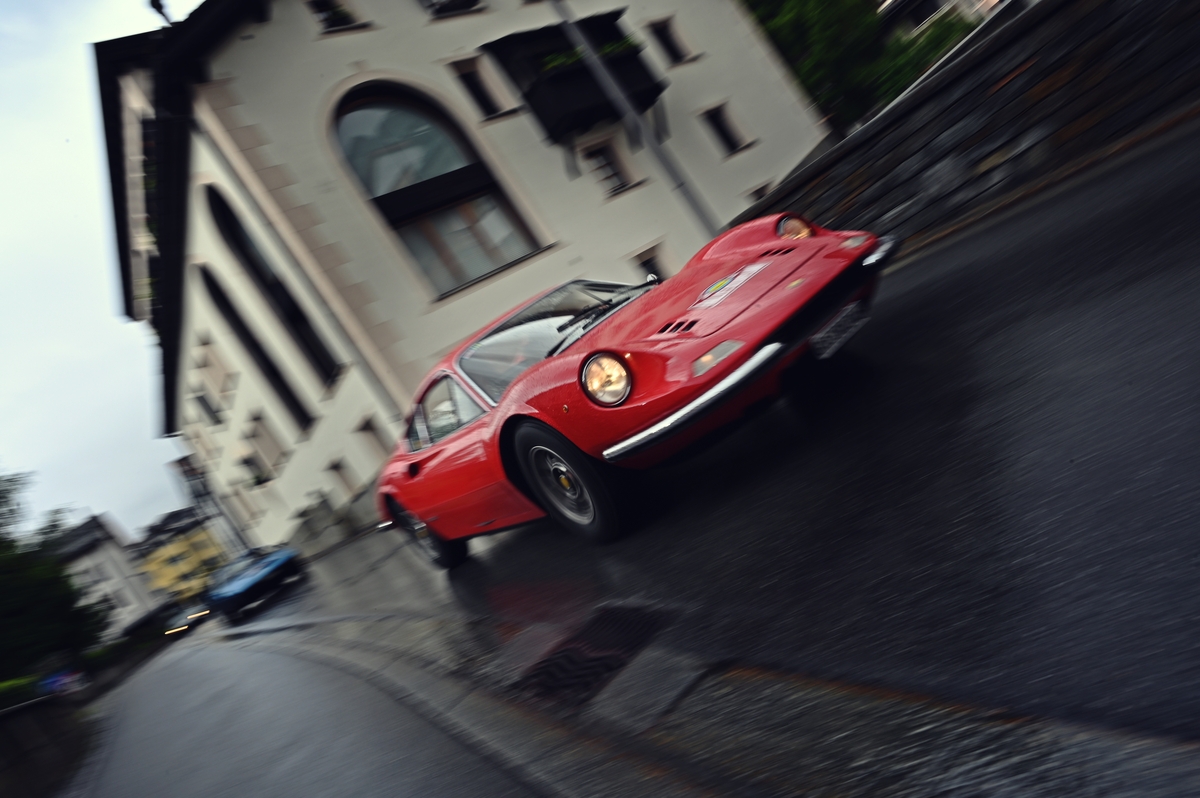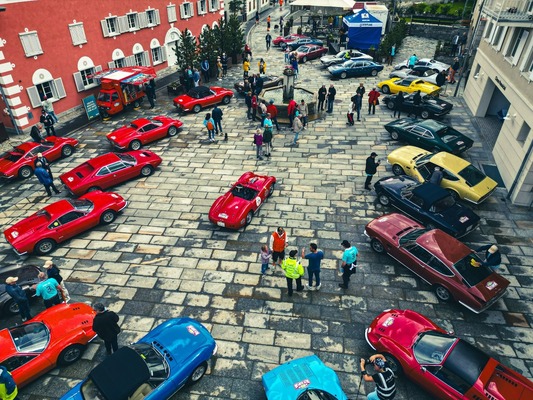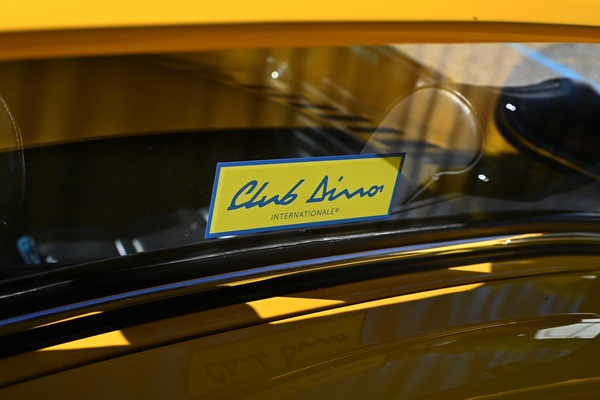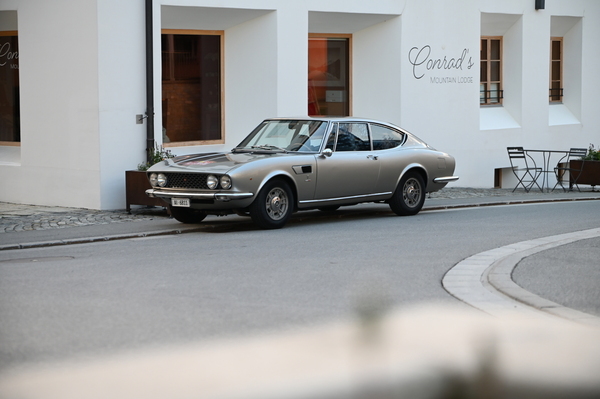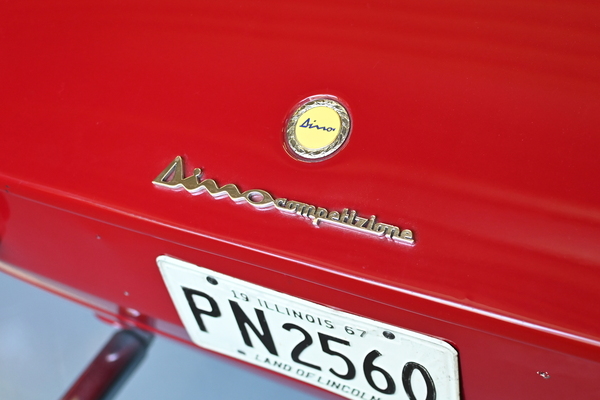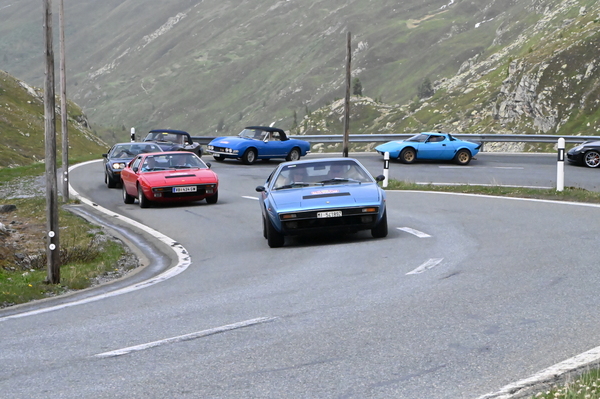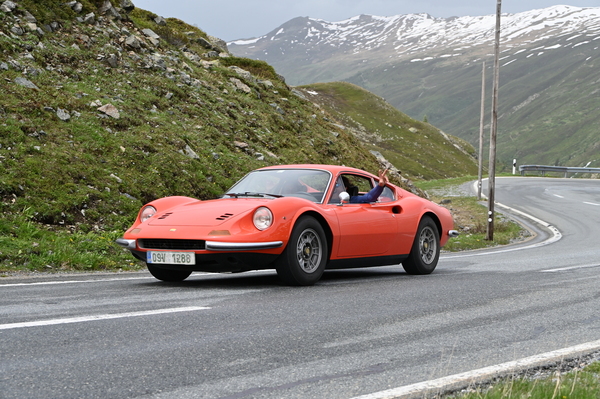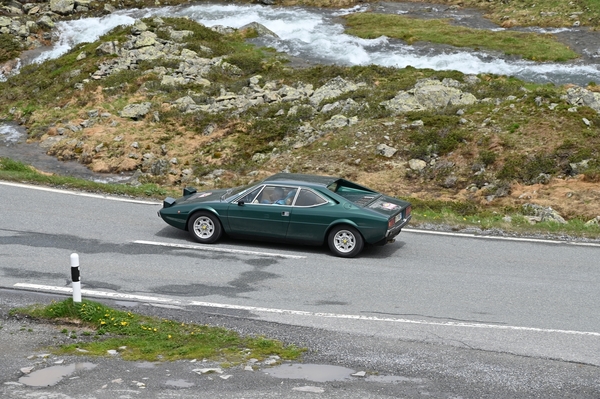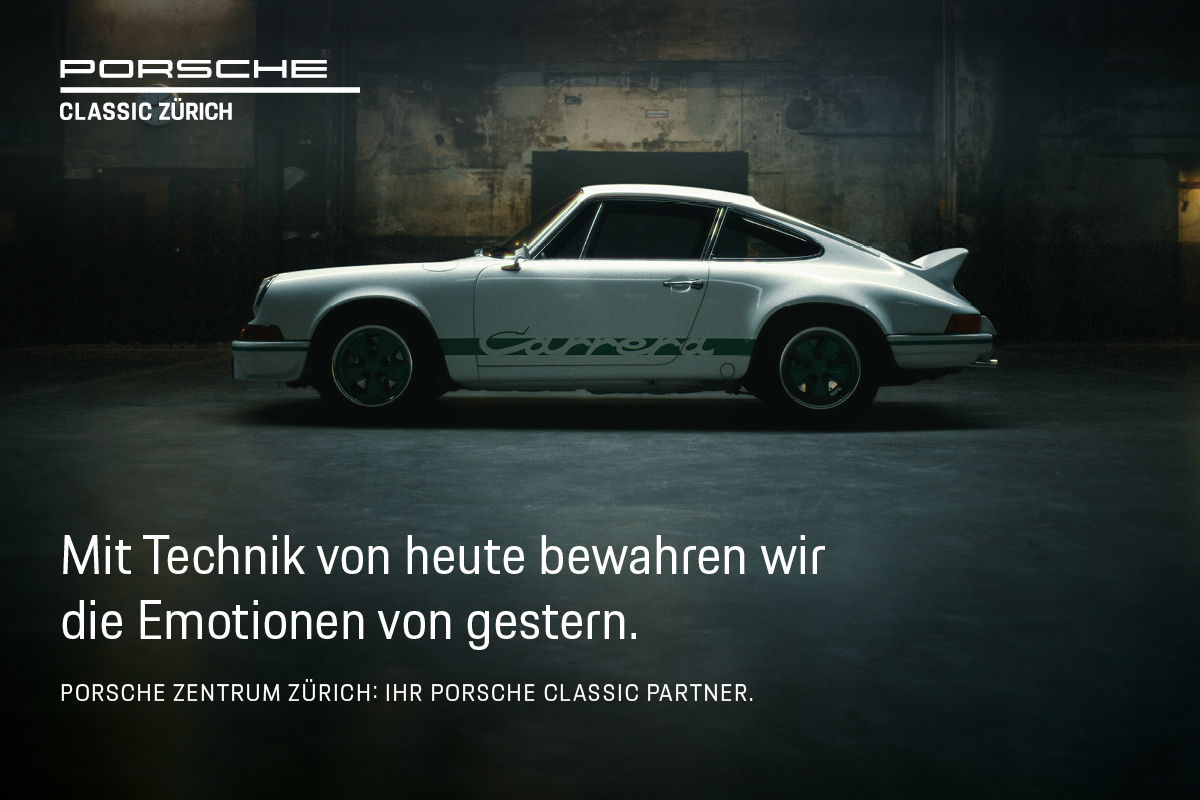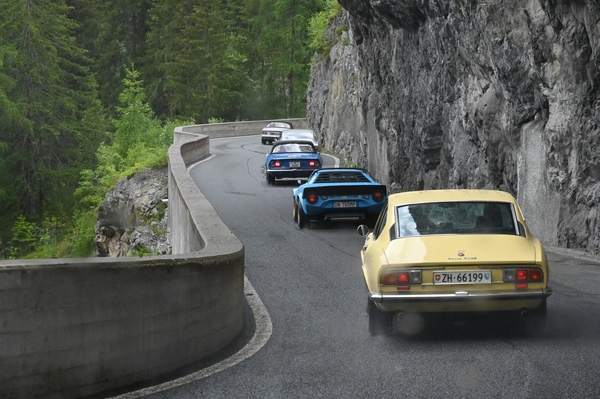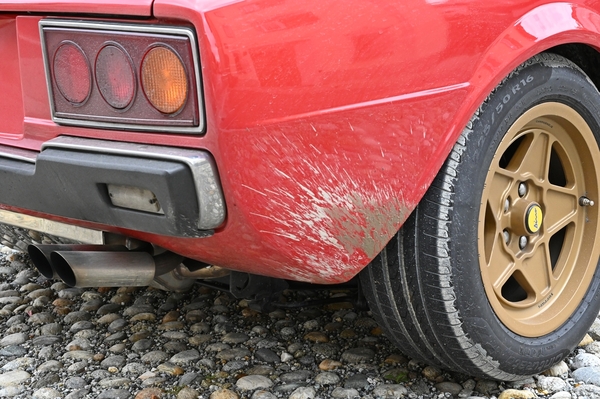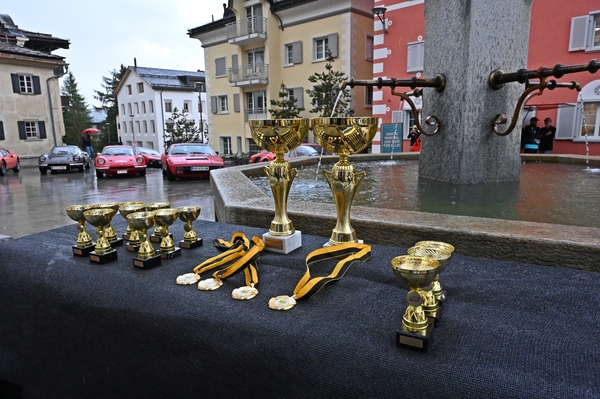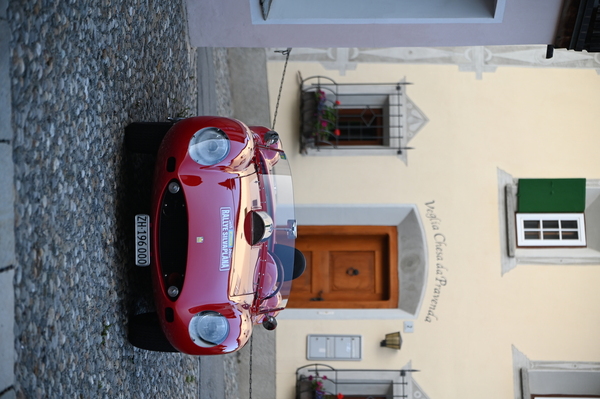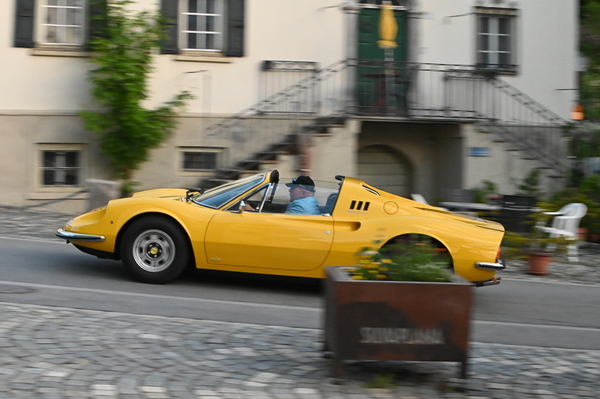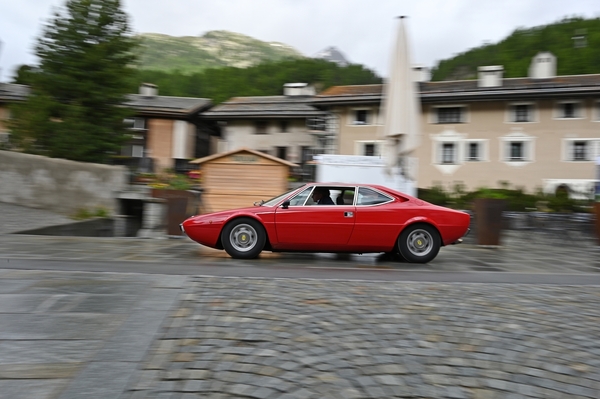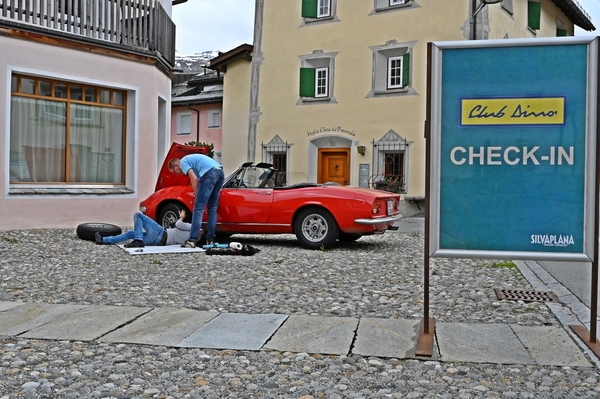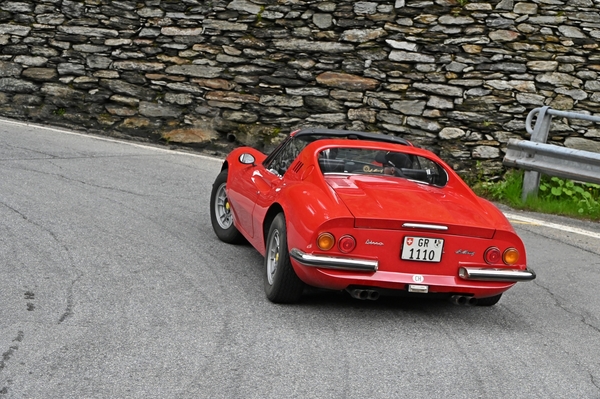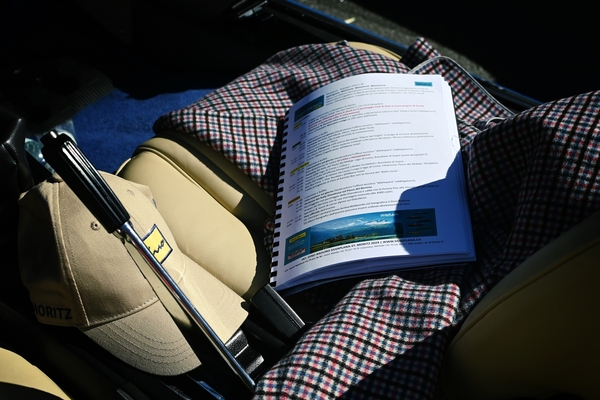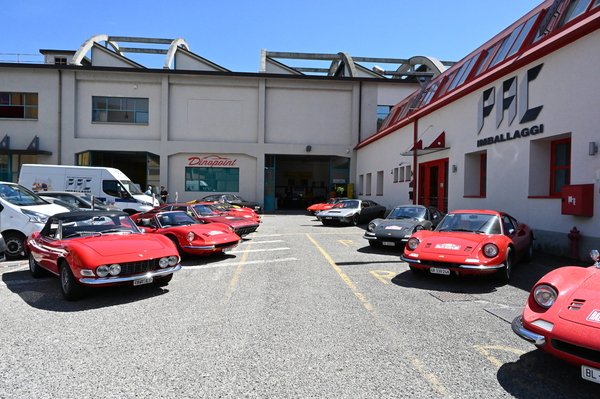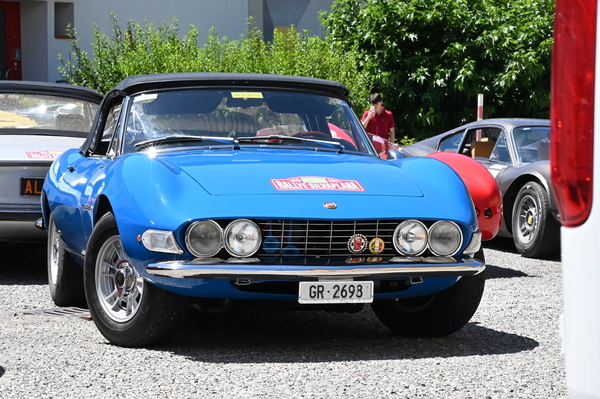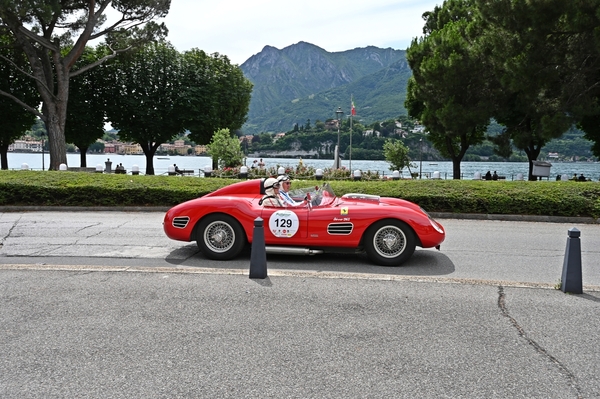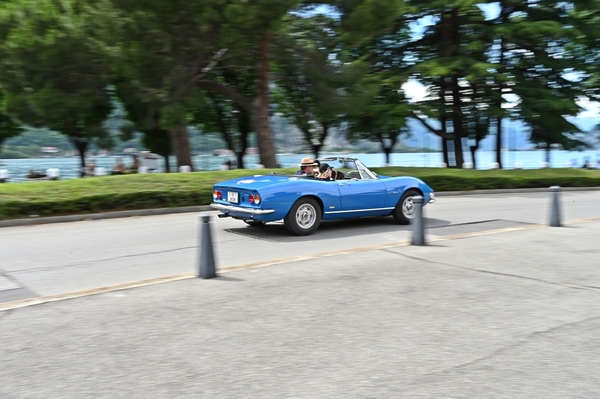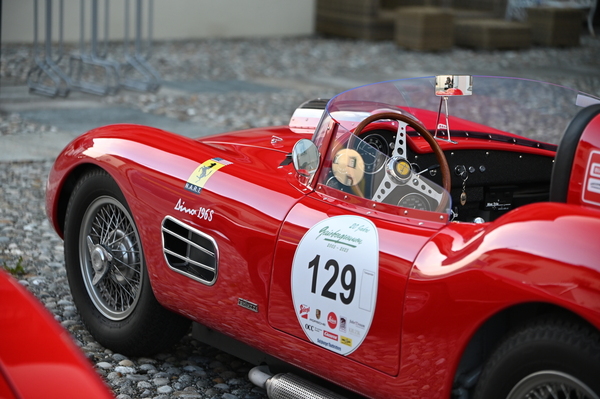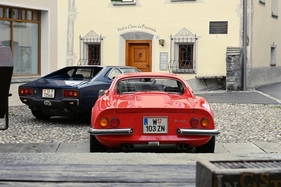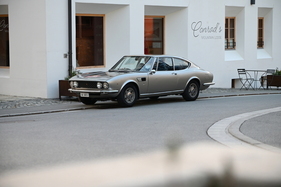When around 30 Dino engines with a displacement of just two or 2.4 liters, but also with racing DNA, are started on a small municipal market square, an elegant elderly lady is beaming from ear to ear. She is a direct resident of the central square in Silvaplana, which is usually very quiet these days and yet, until 2018, was a kind of destination flag and busy gateway for all motorists traveling to the Engadin via the Julier Pass. Compared to the somehow honest Dino six-cylinder sound, it's hard to imagine today's noise and stress levels generated by tuned Porsche GT3 or Maserati Coupé flap exhaust orgies when downshifting downhill.
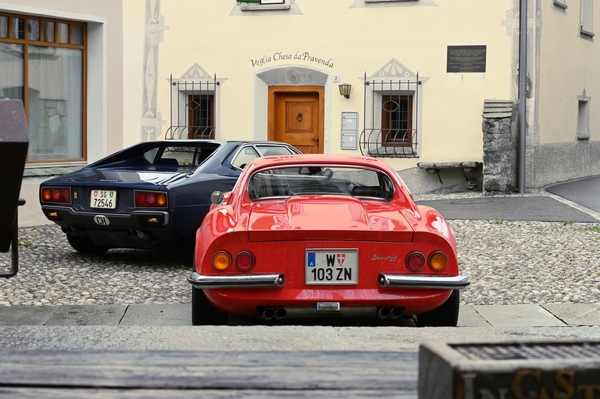
Today, on June 21, the cool and rainy and therefore somewhat shy beginning of summer, the square is filled with a proud orchestra of mechanical intake and tailpipe sounds, beckoned and conducted by host and initiator Daniel Bosshard, a busy hotelier and also the mayor of Silvaplana. It is the first day of the program of the 3rd International Dino Raduno, which took place from 20 to 23 June in Silvaplana and with a radius from Davos via the Diavolezza (on the doorstep) to Bergamo. Bosshard himself is a passionate Dino driver with both a Dino 246 GTS and an early Fiat Dino 2000 Spider.
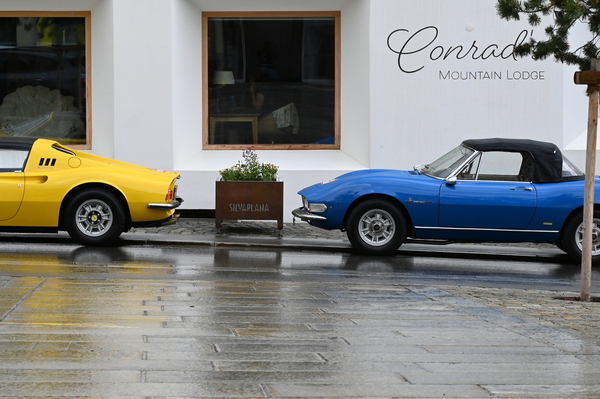
It's remarkable how different a handful of Dino model variants can look and feel. They are all linked by the touching story of Enzo Ferrari's son Alfredino, who fell seriously ill and died young. As a talented engineer, he designed a high-torque six-cylinder racing engine for Formula 2 with an initial displacement of 1.5 liters. Even then, the regulations stipulated that it had to be installed in 500 road cars for homologation purposes; the birth of the dinosaurs. The 206 started out with a displacement of two liters, but to make the engine more suitable for everyday use, the displacement was increased to 2.4 liters. As a result, there are few two-liter and a lot of 2.4-liter vehicles - which actually feel a little more harmonious and "bearish" in terms of torque in traffic. This is hardly surprising and, from the point of view of many fans, only makes driving a Dino even more enjoyable.
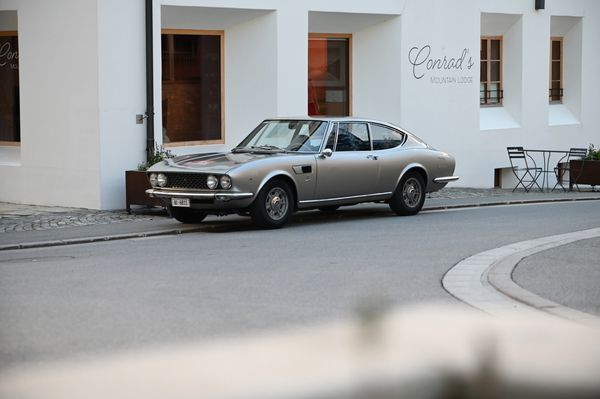
Today, all Dino variants are rare and highly sought-after. Daniel called them all, and they showed up in large numbers: Teams have traveled from as far as Illinois and even Maui (Hawaii), bringing more than 30 vehicles with them to the well-kept Silvaplana. German and Swiss teams are clearly in the majority, but some participants from France and Italy are in an even better mood. The most famous Dino model, the 246 GT and GTS, is represented in dozens. There is also a Lancia Stratos HF, a handful of Dino 308 GT4s, a few 208 GT4s, five Fiat Dino Spiders and four coupés. They also have the Dino six-cylinder engine and were intended to be the new Fiat top model at the request of the second Giovanni Agnelli. In return, Fiat built the Dino engines in series and solved a problem for Enzo Ferrari, who had hardly any capacity for large quantities at the time.
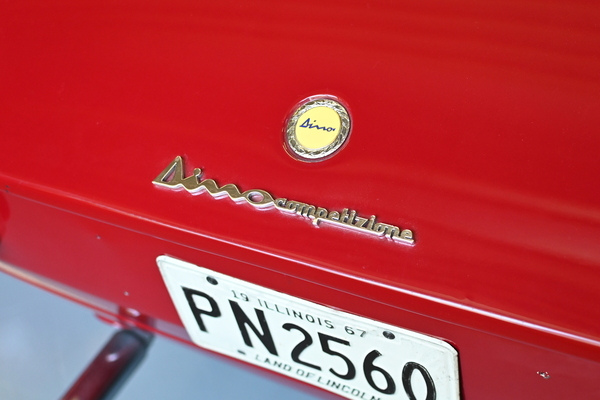
Raduno participants can expect a program with plenty of time in the car. And as is usual this summer, there is of course a heavy rain stage at the start - here over the Flüela Pass to Davos. After returning over the Albula Pass, the car is parked and cleaned dry. A concours of dino elegance awaits, a discipline that always goes well with Pininfarina or Bertone designs. There are winners in all vehicle variations as well as in the categories of rarity, authenticity or overall appearance and quality. These are tough decisions for the jury, given the high level of both restoration quality and successful patina preservation for charming vehicles with original paintwork and original leather.
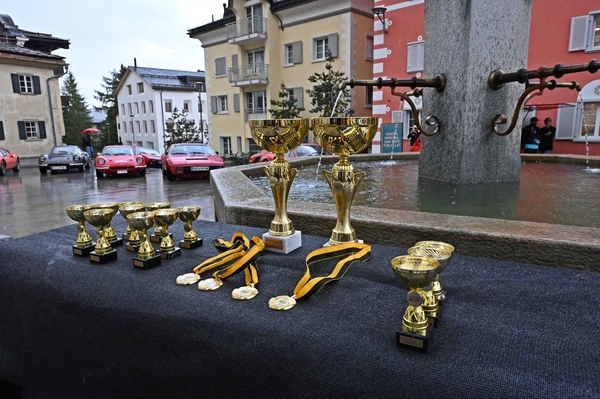
A replica of the Ferrari Dino 196 S, also known as the "Fantuzzi Dino", built back in 1967, which Albert Vicentini found in the Italian provinces a few years ago, is undoubtedly an exotic and perhaps even more beautiful than the other beauties; almost like a successful pearl diver. He was able to acquire it as an "absolutely unsaleable vehicle" and restore it true to the original in Switzerland. There were not many originals; only a single 196 S built by Scaglietti in 1958 has survived as an original, while at the same time around ten other replicas were built in the 1960s and are still so rarely driven today that hardly anyone has ever seen one. How commendable, on the other hand, this intrepid and joyful use of rain by Vincentini.
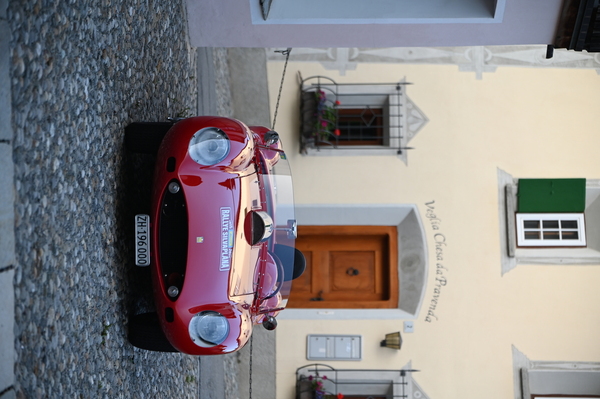
Saturday morning greets the participants promisingly with early morning fog, which - better than expected - clears the way for the sun as early as the drivers' briefing at 7:00 am. It feels as if, contrary to all forecasts, the weather gods have mercy on vehicles that otherwise rarely see water and were not built for it. After almost all of Silvaplana's vacation guests have been woken up at around 8:00 a.m. with cheerful farewell honking, the tour continues in an aesthetic red, yellow and blue convoy down the Maloja Pass, along Lake Como to Bergamo, with Dino-Point as the destination. "This is the most important hospital for our dinosaurs far and wide," is how one participant sums it up. And so the "carers" from Dino-Point swarm out in stylish dino overalls when the large dino family arrives and listen to which dino could do with some attention as they coordinate parking. Dino-Point boss Walter Scudeletti welcomes his guests fluently in three languages with details about the company's history, anecdotes from engine construction and a guided tour of what is perhaps the world's largest Dino spare parts warehouse, especially with tested or already overhauled used parts.
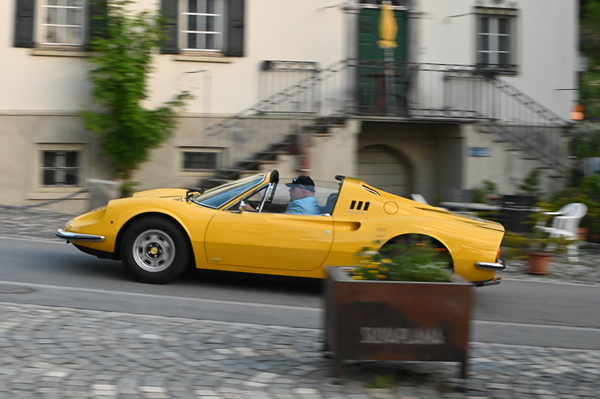
On the return journey, the younger Italy has also slowly woken up and is on its way to the lake for a swim. The 35 Dino vehicles, which could attract as much attention as an unannounced visit from the Pope as national heritage, keep crossing the lake today. And they are indeed greeted with plenty of honking, waving and beaming faces. Even more interesting is another observation: a blue 208 GT4 in an edgy seventies design and with matching old Milan license plates generates significantly more enthusiasm and "want-to-have" looks, at least among younger men, than the more rounded 206 / 246 GT or Fiat Dino Spider - which instead make elegant newspaper readers or women of all ages beam.
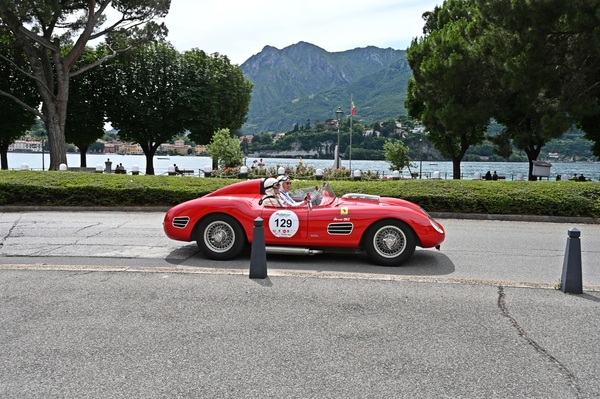
The fourth Dino Raduno Silvaplana is planned for next summer and will also be open to selected Ferrari vehicles for the first time. "We have sealed a wonderful new partnership here in Silvaplana with the traditional Ferrari specialist Carugati from Geneva," says host Daniel Bosshard. If you want to take part, you must bring a Ferrari or Dino for 2025 (including the 246 GT / GTS, of course) and register early. This is best done directly at [email protected] or via the website of the municipality of Silvaplana. There you can also get advice on the possibilities for club meetings of all brands.
One thing remains to be said: It was a perfectly organized event, and there are probably few communities and regions where classic car and youngtimer events can be held as enjoyably and at the same time with such high esteem as in the Upper Engadine; especially in Silvaplana. And even if this place is already noticeably traffic-calmed, you shouldn't let this irritate you up here. Exceptions are the rule - and they create cultural diversity.
